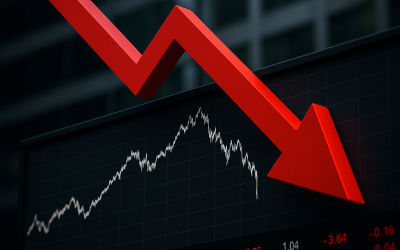BYD Dealer Bankruptcies: The Canary in China’s EV Coal Mine
The recent wave of bankruptcies among BYD dealers isn’t just a headline about struggling car sellers—it’s a flashing warning sign about the unsustainable economics underpinning China’s electric vehicle (EV) sector. This article cuts through the noise to examine how relentless price wars, unchecked capacity growth, and flawed incentives are destabilizing the world’s largest EV market, and what that means for global industry players and policymakers.
The Real Cost of China’s EV Price War: Unsustainable Margins and Dealer Collapse
China’s EV market has been the envy of the world, with government support, aggressive innovation, and a sprawling manufacturing base. But beneath the surface, the economics are breaking down. The latest evidence: a growing number of BYD dealerships—once considered safe bets—are shuttering or filing for bankruptcy. The root cause isn’t just poor management or local missteps; it’s a systemic problem driven by a brutal, ongoing price war among EV makers.
Let’s break down what’s really happening:
- Price Wars as a Double-Edged Sword: Major Chinese EV brands, led by BYD, have slashed prices repeatedly to win market share. While this boosts short-term sales, it erodes profit margins across the value chain. Dealers, who operate on thin margins and depend on volume, are the first to break when prices fall faster than costs.
- Overcapacity and Inventory Glut: China’s automakers have built far more capacity than the market can absorb. Factories run below optimal utilization, and unsold inventory piles up at dealerships. When dealers can’t move cars profitably, cash flow dries up, and bankruptcy follows.
- Incentive Misalignment: Automakers push aggressive sales targets onto dealers, often with little regard for local demand. Dealers are forced to take on more inventory than they can sell, leading to discounting, losses, and ultimately, insolvency.
What’s unsaid in most coverage is that these bankruptcies aren’t isolated incidents—they’re the predictable result of a system that rewards overproduction and penalizes sustainable growth. The government’s drive to make China the global EV leader has created perverse incentives: more factories, more cars, more competition, but not more profit or stability.
Who Benefits, Who Loses: The Real Winners and Losers in China’s EV Shakeout
The collapse of BYD dealers is just the tip of the iceberg. To understand the broader impact, follow the money and incentives:
- Automakers: In the short term, giants like BYD can weather the storm thanks to scale and government backing. But even they face shrinking margins and rising inventory costs. Smaller players are at risk of being wiped out entirely.
- Dealers: The weakest link in the chain. Forced to absorb losses and manage excess stock, many are exiting the market or consolidating. This leads to job losses, reduced service quality, and fewer consumer choices.
- Consumers: While buyers enjoy lower prices now, the long-term effect is less competition, fewer choices, and potentially lower quality as struggling firms cut corners to survive.
- Government: Policy makers face a dilemma. Continued support for overcapacity distorts the market, but pulling back risks mass layoffs and social unrest. The current trajectory is unsustainable, but politically difficult to change.
Globally, the ripple effects are significant. Western automakers and policymakers watching China’s EV boom should take note: the apparent success is built on shaky foundations. Overcapacity and price wars may lead to a flood of cheap Chinese EVs on world markets, triggering trade tensions and protectionist responses. But these exports won’t fix the underlying economic contradictions at home.
Strategic Moves: What Leaders Should Do Next
For operators, investors, and policymakers, the lesson is clear: don’t mistake volume for viability. Here’s what a grounded, strategic response looks like:
- Automakers: Shift focus from raw output to sustainable profitability. Rationalize capacity, prioritize quality and brand, and build dealer relationships based on mutual success—not just sales targets.
- Dealers: Consolidate to survive. Negotiate for more realistic inventory and margin terms. Explore after-sales services and used EV markets to diversify revenue streams.
- Government: Rethink subsidies and incentives. Support industry consolidation and quality upgrades, not just expansion. Invest in retraining and transition programs for displaced workers.
- Global Players: Don’t be dazzled by China’s EV sales figures. Watch for signs of distress in the supply chain, and prepare for potential dumping of excess inventory on global markets.
The real signals to watch: dealer profitability, inventory turnover rates, and the pace of industry consolidation. Ignore the hype about sales records and focus on the underlying health of the ecosystem. Sustainable growth in the EV sector will require hard choices and a shift away from the current “growth at any cost” mentality.
Conclusion
The wave of BYD dealer bankruptcies exposes the unsustainable economics behind China’s EV boom—driven by relentless price wars, overcapacity, and misaligned incentives. Real industry health depends on profitability, not just production numbers. Leaders who focus on sustainable value, not just market share, will be the ones left standing when the dust settles.



0 Comments